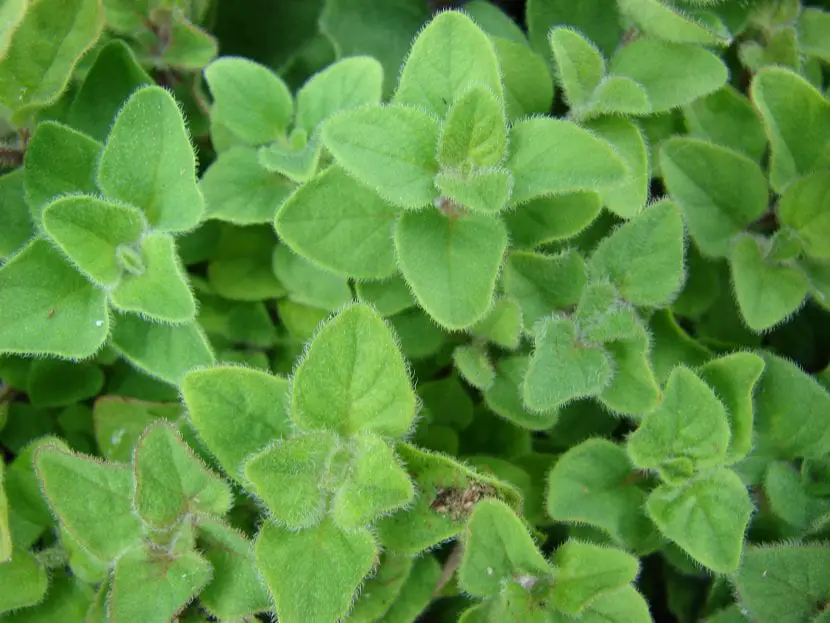
The marjoram It is a herbaceous plant that has been used for millennia for its interesting properties, in addition to being very decorative. The soft touch of its leaves and its precious white flowers make it a highly recommended option to beautify patios, terraces, balconies and, why not? Also gardens.
Its cultivation is suitable for beginners, since marjoram it is very resistant to pests and does not require any special care. But even so, there are things that are a secret for many people, who do not quite dare to take a pot home. After reading this article, surely that mistrust will have already disappeared .
Marjoram characteristics

Marjoram, whose scientific name is Marjoram oreganois a perennial shrub-like plant native to India and the Middle East, although in ancient times it spread throughout the Mediterranean, including Egypt, Rome and Greece. It grows to a height of approximately 60cm, with highly branched stems. The leaves are opposite, whole, oval and petiolate, and are tomentose, that is, they are covered by a fine whitish hairs.
The flowers appear grouped in terminal clusters, that is, when they wither, the stem that supported them also dies. These are very small, less than 1cm in diameter, and have four tomentose bracts. The calyx is white, pinkish or purple, and it must be added that it is a honey plant.
Once they are pollinated, the fruit begins to ripen and take the shape of a quadrangular achene, which will be brown when it completes its ripening process, which will occur more or less towards the fall if the climate is temperate or warm.
How do you take care of yourself?
If you want to have a marjoram in your home or garden, take note of these tips:
Location
Place this plant in an area where it gets direct sunlight or, failing that, in a very bright place.if possible outdoors, although it can grow well indoors with lots of light.
Withstands frosts up to -3ºC.
Irrigation
Irrigation must be frequent and regular. During the warmer months, it will be watered up to 4 times a week, while the rest of the year it will be up to a maximum of 3 times. The frequency will vary depending on the climate in which the plant lives: the drier and warmer, the more often the watering will have to be.
Of course, you have to try to avoid waterlogging, because you don’t like having your “feet wet.” To do this, in case of doubt, checks the humidity of the substrate or soil inserting a thin wooden stick to the bottom and then see if it has come out practically clean -which would mean that it is dry-, or with a lot of soil attached.
Subscriber
Subscribing is, like watering, one of the most important tasks for plants, including marjoram, especially if they are in pots. The nutrients in the soil or in the substrate gradually disappear, so it is necessary to give them an extra contribution of ‘food’ so they can continue to grow.
Fertilize your marjoram in spring and summer with Organic fertilizersAs manure or worm humus, since being a plant that can be used for human consumption, we should not put our health at risk.
Transplant

Whether you want to move it to the garden or to a new pot, which by the way you have to do every two years, you can transplant it in springafter the risk of frost has passed.
Reproduction
You can get new specimens by buying an envelope of seeds in spring, and sowing them in that same season either directly in the ground or in pots. You just have to cover them with a little soil, enough so that the wind cannot carry them away, and water. They will germinate in a maximum of two weeks keeping the area or container moist.
Harvest
After flowering, you can trim several stems about 4-5cm high above the ground. Place them on a wood, in a ventilated place and with a temperature below 23ºC, until they dry. Once they have dried, they can be stored in airtight glass jars for up to a year.
Uses of marjoram
Marjoram is used as an ornamental, as a culinary plant or as a medicinal plant due to its interesting properties.
Ornamental plant
It is one of those plants that most like to have on patios and balconies, since it takes up almost no space and also its flowers are very decorative. To all that has been said so far, it must be added that its leaves give off a very pleasant aromaso growing it at home is one of the best decisions we can make .
Culinary plant
The leaves and their flower stems are widely used to complete many dishes, such as pasta dishes, tomato salads, chicken sandwichesor even as appetizer along with anchovies garnished with lemon juice and olive oil.
Medicinal plant
Marjoram is used primarily to relieve and / or treat digestive disorders such as stomach ulcers, intestinal spasms or cramps. But not only that, but it possesses Antibacterial propertiesy can also be used to relieve cold and flu symptomsAs antirust, antidiabetic y anticancer.
It can be used either as an infusion (5 grams of leaves per 250 ml of water five times a day), or as an essential oil that you will find for sale in herbalists.

Marjoram is one of the most special plants that you can grow in a pot, don’t you think?

